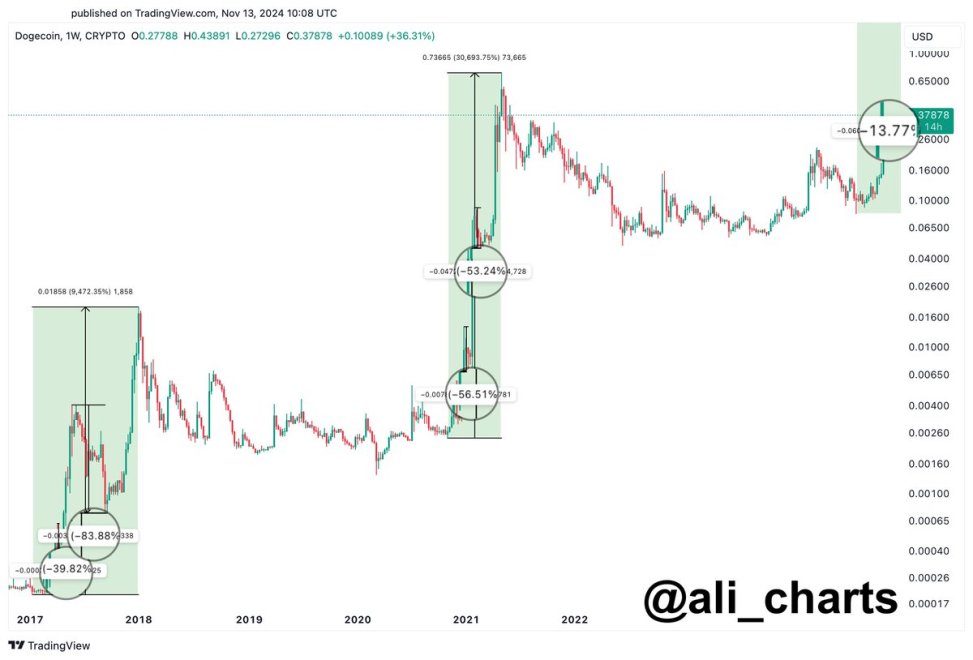A hydropower plant in Costa Rica has been converted into a green crypto-mining enterprise. But, can energy-intensive cryptocurrencies like bitcoin ever be compatible with climate goals? Eduardo Kopper had to shut down the turbines of his Poas I hydropower facility in Costa Rica's Central Valley region by the end of 2020, after 30 years of operation. The Costa Rican Institute of Electricity, the country's public electricity distributor, turned down Kopper's attempt to sell his energy because the country had an abundance of renewable energy. "Basically, we couldn't do anything," Kopper explained. "It was a troubling situation. We were attempting to keep our employees alive."
He discovered bitcoin at that time. According to the Bitcoin Energy Consumption Index, the cryptocurrency is a massive energy consumer, with a carbon footprint similar to Kuwait's.
Dedicating his plant to Bitcoin mining appealed to Kopper as a means to directly transform his green energy into currency. Poas I was returning in April 2021, after three months of idleness, as a renewables-powered cryptocurrency mining facility. And he's not the only one. Miners from all over the Americas, mainly the United States, are flocking to the "green Bitcoin" bandwagon. Large cryptocurrency mining companies in the United States, such as Bitfarms and Neptune Digital Assets, are increasingly selling their operations as "green." Meanwhile, legislators in Brazil are considering a tax exemption for renewable-powered crypto mining.
Bitcoin's massive energy consumption is critical to how its blockchain technology works. New bitcoins are created by solving complicated mathematical riddles, a feature known as "proof of work." This guarantees that the blockchain network is decentralized. However, it necessitates a massive amount of computing power as miners fight to solve these difficulties first. Recognizing the environmental impact of the energy-intensive currency, more than 200 companies and people created the Crypto Climate Accord last year, pledging to achieve net-zero operations by 2030, primarily through the use of renewable energy sources.
Green mining, however, is not universally regarded as a win-win approach for cleaning up the dirty money. According to economist and Bitcoin specialist Alex de Vries, it can be troublesome to use precious renewable energy on "random processing" rather than industries that generate jobs and other economic advantages to a national economy. In fact, renewables have already played a significant part in crypto mining, as they are frequently the cheapest source of power. According to a CoinShares study, at least 74% of Bitcoin's global energy usage in 2019 came from renewables, with much of it coming from cheap Chinese hydropower.
According to Jose Daniel Lara, a Costa Rican energy researcher at UC Berkeley, there is some rationale to green cryptocurrency mining in Costa Rica, which has an energy excess. Costa Rica should ideally export its excess power. But that is simply not possible at the moment. While its neighbor Nicaragua, for example, may profit from Costa Rican energy, it lacks the capacity to import it.
Bitcoin mining has enabled Kopper to resurrect two of his decommissioned 1 MW hydropower facilities and convert the electricity into something that can be exported without the use of physical power infrastructure. "We discovered a way to convert energy into a digital token here," he explained. He built a container-like storage area for central processing units, protected it against Costa Rica's extreme heat and humidity, and began renting some of these CPUs to mining businesses around the world.
He's now mining bitcoins for himself. He has avoided laying off his 25-person workforce and plans to reactivate a third factory in the coming months.
Although the Poas I crypto-mining center is the first of its kind in Costa Rica, Kopper has received inquiries from other private energy providers in the country interested in joining the venture.
Furthermore, companies say that crypto mining might genuinely help solve problems associated with sustainable energy production.
There is no reason why cryptocurrency can’t be green and can’t lead to the reduction in carbon footpath . Many efforts have been undertaken to limit the carbon footprint in order to avoid further loss of life and property. I am aware of the work of Blockchain initiatives such as Nature's Vault, which pushes for the abolition of gold mining, and Cardano, which is concerned with lowering carbon footprints. However, further efforts are required to address this issue.
[link] [comments]

You can get bonuses upto $100 FREE BONUS when you:
💰 Install these recommended apps:
💲 SocialGood - 100% Crypto Back on Everyday Shopping
💲 xPortal - The DeFi For The Next Billion
💲 CryptoTab Browser - Lightweight, fast, and ready to mine!
💰 Register on these recommended exchanges:
🟡 Binance🟡 Bitfinex🟡 Bitmart🟡 Bittrex🟡 Bitget
🟡 CoinEx🟡 Crypto.com🟡 Gate.io🟡 Huobi🟡 Kucoin.

















Comments